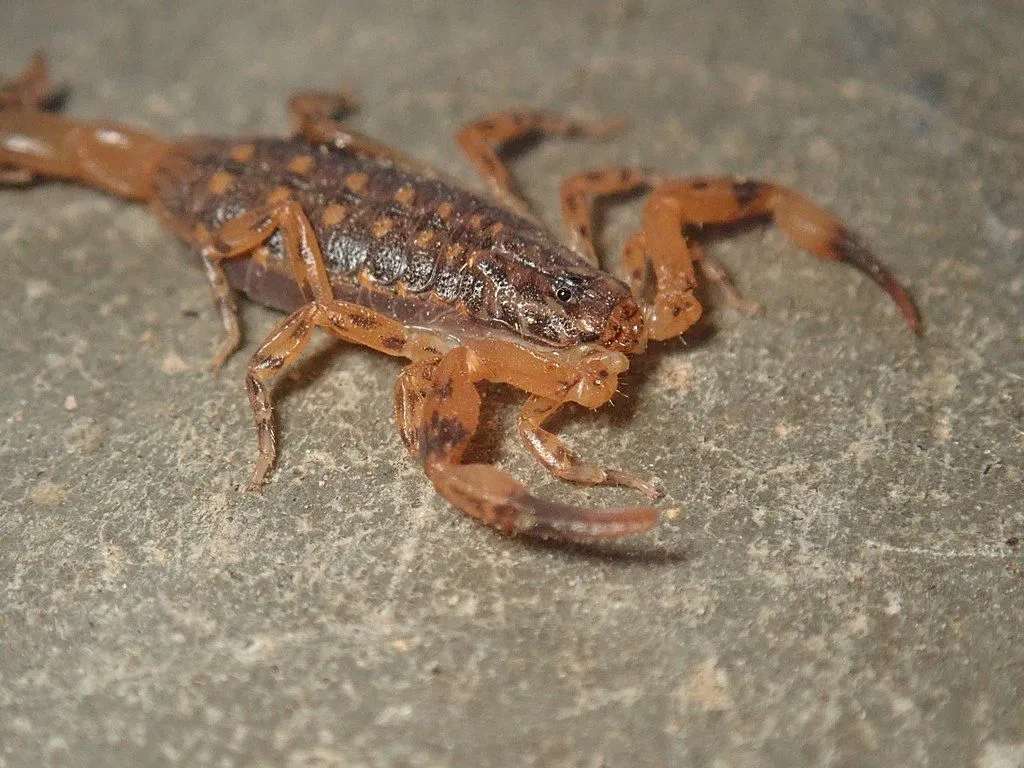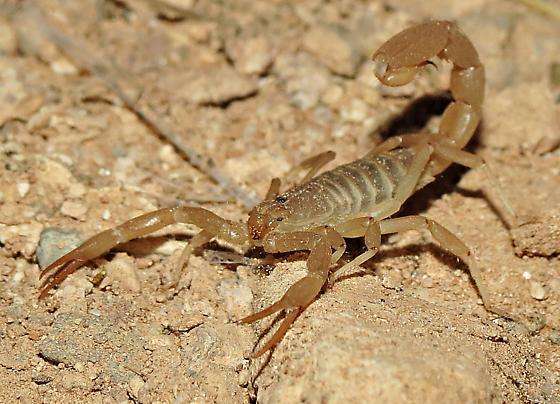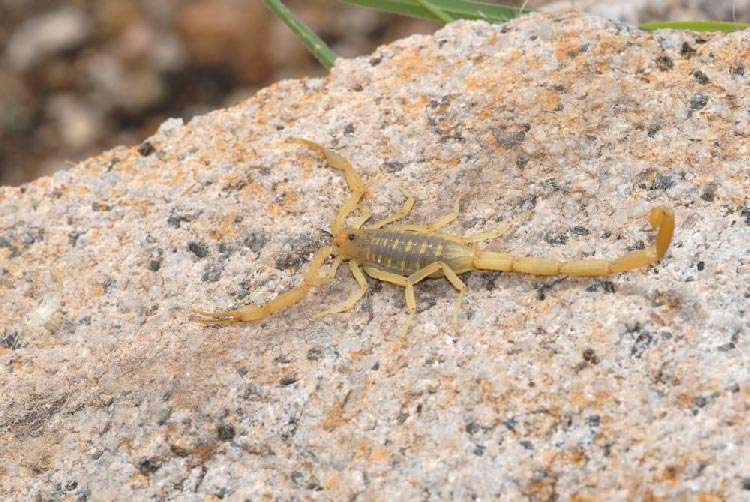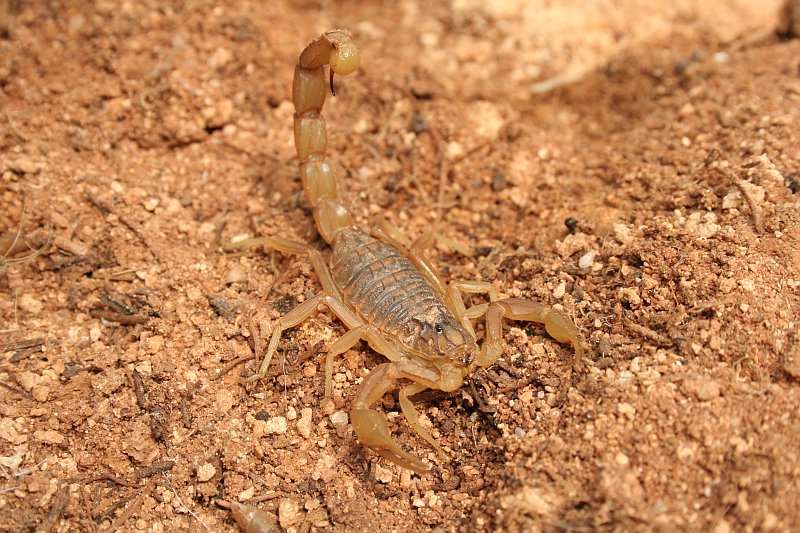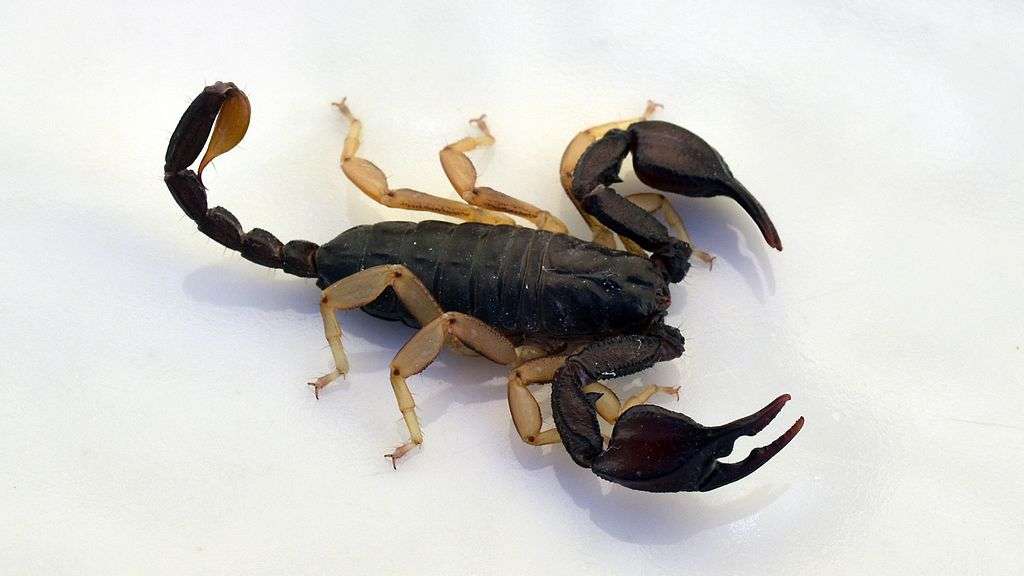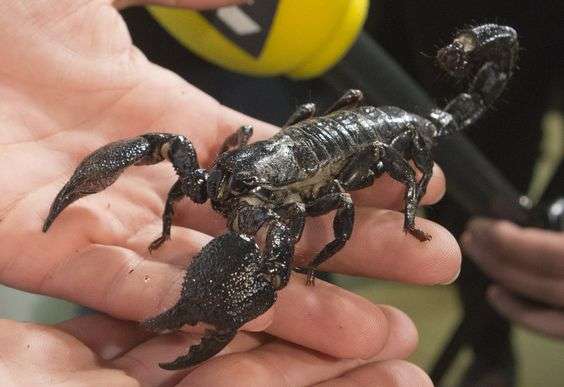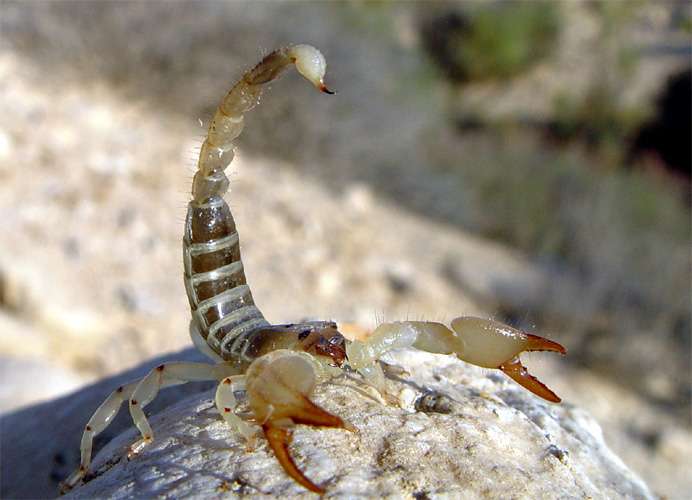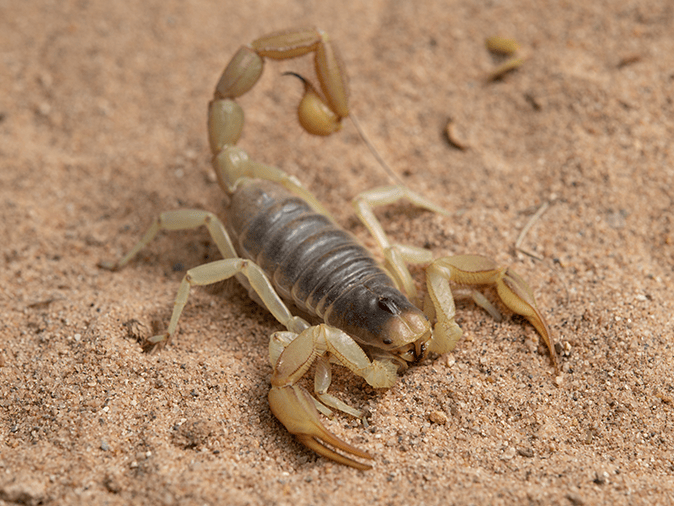Striped Bark Scorpion
Description Scientific Name: Centruroides vittatus A smaller species is the striped scorpion. Total body length ranges from 1″ to about 2 1/2- 3″, with males being slightly longer and leaner. They come in a variety of hues and patterns, but are often light orange or reddish in colour with two dark, longitudinal stripes on their […]
Striped Bark Scorpion Read More »



